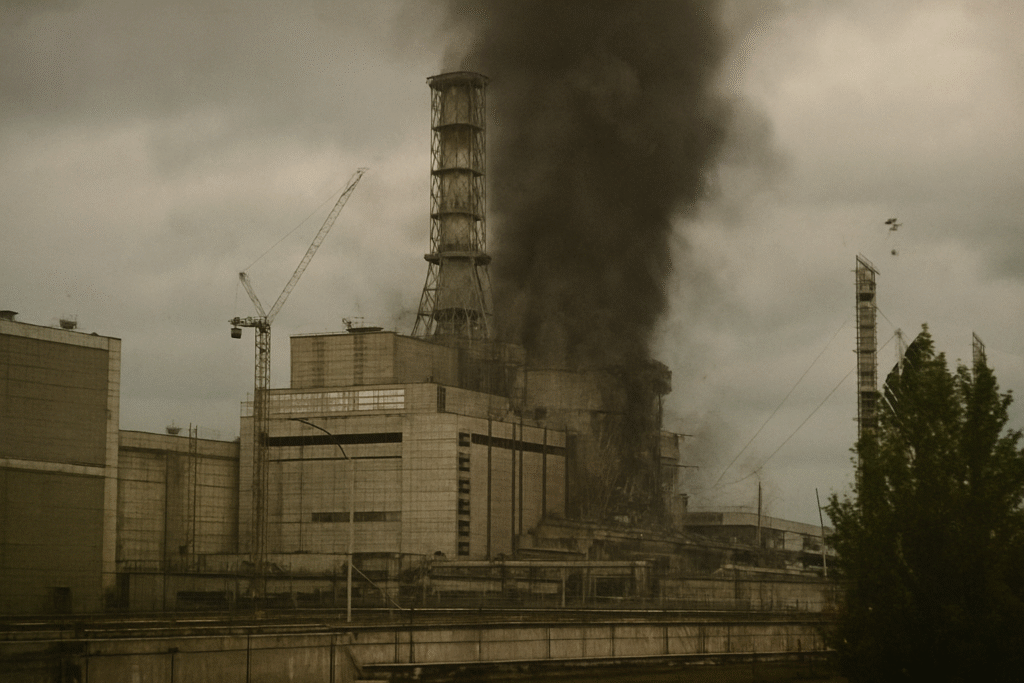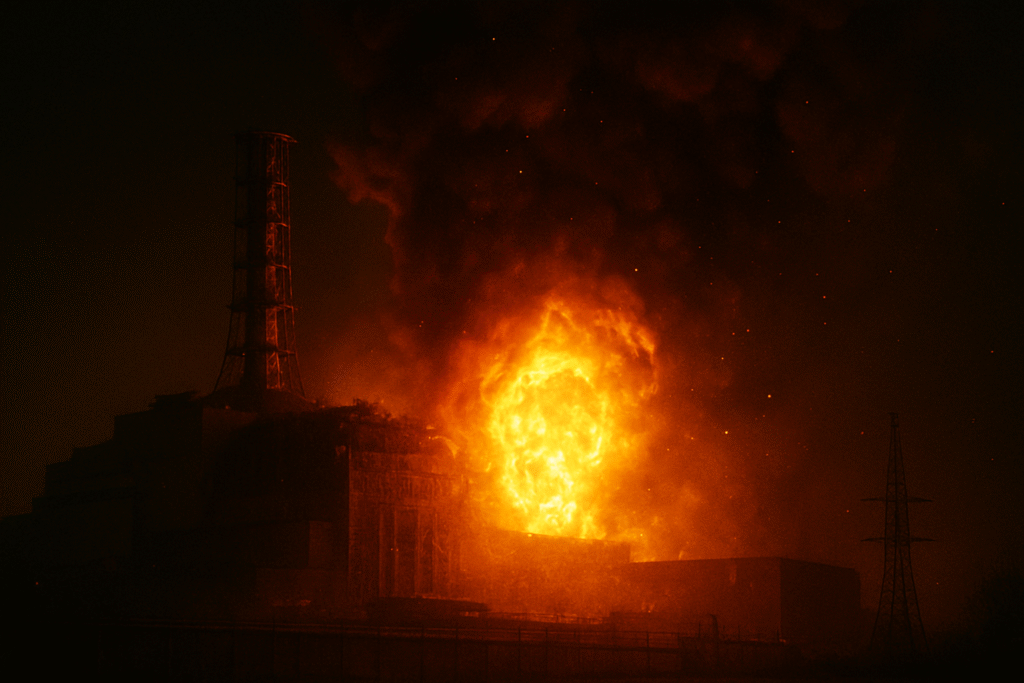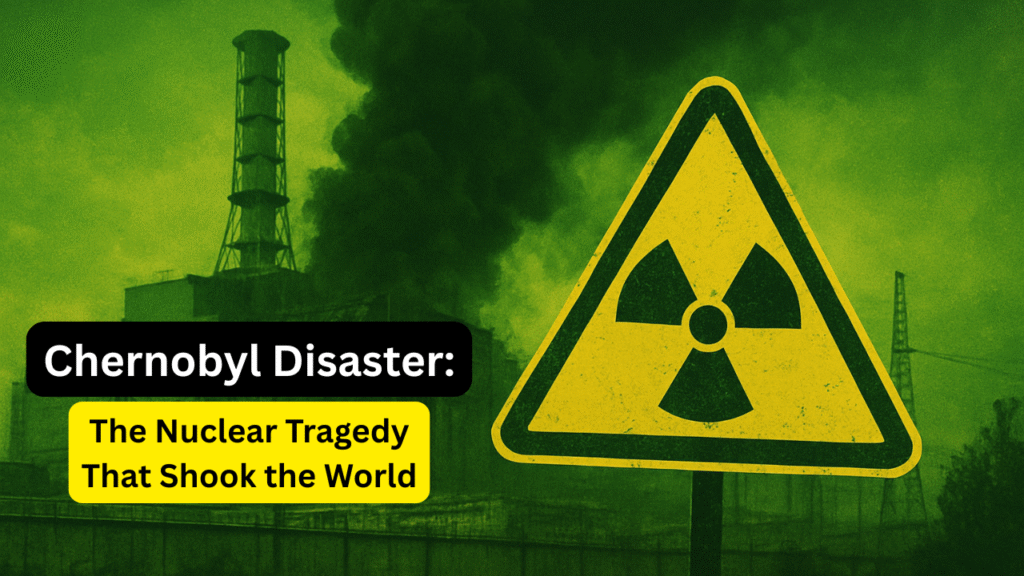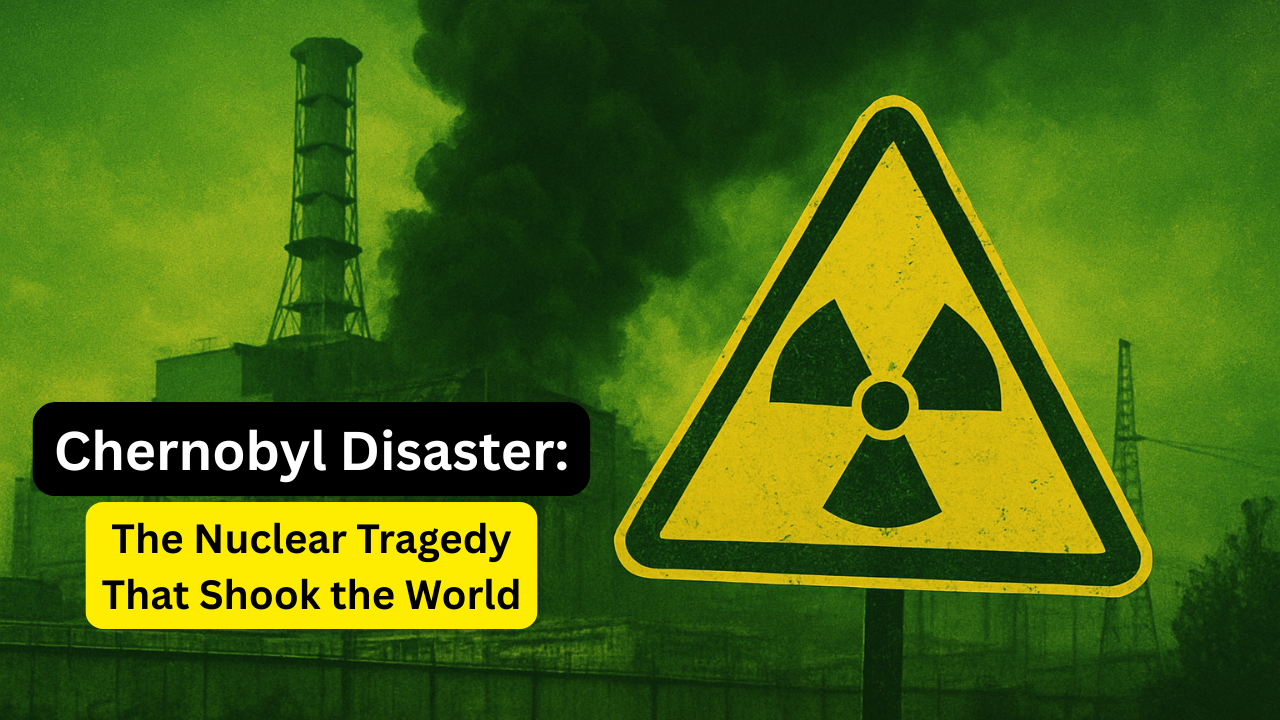The disaster at Chernobyl, which ranks as one of the most severe nuclear accidents in the history of humanity, took place on April 26, 1986, at the Chernobyl Nuclear Power Plant in the Soviet Ukraine, near the city of Pripyat. A supposedly routine late-night safety test at Reactor No. 4 soon gave way to a horrific explosion, sending huge quantities of radioactive material out into the atmosphere and leaving an indelible impression on world history.
The Night of the Explosion
The disaster occurred during a safety test intended to mimic a power outage. Because of a chain of human mistakes and design deficiencies in the RBMK reactor, the test went terribly wrong. At 1:23 a.m., a power surge suddenly caused two explosions that destroyed the reactor. The explosion blew out of the building a radioactive cloud that spread throughout Europe, contaminating huge parts of Ukraine, Belarus, and Russia.
The blast was so immense that it hung the 1,000-ton lid of the reactor in mid-air. Blazes erupted instantly, and the core was exposed, spreading lethal radiation into the environment. Firemen and plant employees hurried to the site, many not knowing the high levels of radiation they were being subjected to. Dozens were hospitalized within hours for acute radiation sickness — many of whom would eventually perish over the next few days.
The Human and Environmental Toll
The initial death count caused by the explosion was formally placed at 31, but the long-term damage was much worse. Thousands of individuals over the years developed cancer, respiratory disease, and radiation-related birth defects. The city of Pripyat, which is situated close by and had in excess of 49,000 citizens, was evacuated in a matter of 36 hours and became a ghost town that is still deserted today.
The “Exclusion Zone”, the 30-kilometer radius of the plant, was established to avoid further exposure. Even after decades, some areas still have dangerously high levels of radiation, making it impossible for permanent human habitation.
Soviet Secrecy and Global Reaction
At first, Soviet leaders tried to conceal the magnitude of the disaster, but with radiation being detected in Sweden two days later, global outcry compelled the USSR to come clean. The late response and secrecy attracted international condemnation, resulting in reforms in global nuclear safety and crisis communication.
Cleanup and Containment
More than 600,000 laborers, termed “liquidators,” were sent in the months after the explosion to contain the disaster. The liquidators constructed a concrete tomb over Reactor No. 4 to contain radioactive outflow. In 2016, a new steel building known as the New Safe Confinement was placed to encase the reactor for the next 100 years.
Legacy and Lessons


The Chernobyl disaster redefined the way the world perceives nuclear power. It revealed the risks of complacency, inadequate reactor design, and political concealment. The incident led to extensive overhauls of nuclear safety measures, such as the formation of the World Association of Nuclear Operators (WANO).
Nowadays, Chernobyl is a haunting reminder and a symbol of strength. It has become a research site and even a tourist destination, as regulated trips enable individuals to observe the remnants of one of the most horrific human-made catastrophes in history.
Almost four decades on, the Chernobyl meltdown still remains a stark reminder — an uncannily vivid warning of the might and danger of nuclear power when safety and honesty are breached.









